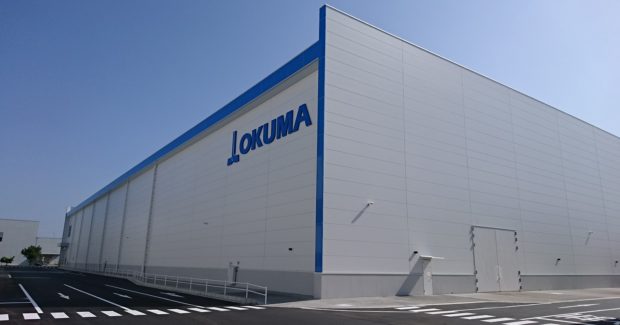Okuma Completes Smart Factory
Their smart factory expands their capabilities and production efficiencies for machining centers and double-column machines.
Posted: June 24, 2019
Okuma America Corporation (Charlotte, NC) has announced the completion of the company’s newest production facility Dream Site 3 (DS3) located in in Kani, Japan. This smart factory utilizes cutting-edge technology, robots and IIoT to manufacture vertical and horizontal machining centers and double-column machining centers to support the company’s product line. Innovative technology coupled with automation at this smart factory can shorten production lead times by up to 50 percent.
DS3 is a self-contained start-to-finish production facility for vertical and horizontal machining centers and double-column machining centers. This is the third smart factory investment by the company in Japan, with the first two factories – DS1 and DS2 – being built in 2013 and 2017 respectfully on the company’s headquarters compound in Oguchi. DS1 was one of the first self-contained start-to-finish smart factories.
Building their smart factories based on the goal of building futuristic factories that interweave automation with skilled techniques, these smart factories combine cutting-edge automation, technologies for unmanned operation, advanced IIoT and workplace know-how to achieve high-mix low-volume production while maintaining production efficiency equivalent to that of mass production.
DS3 Highlights:
- More Advanced Automation by Using Smart Machines and Robots That Consolidate Processes: At the DS3 Parts Factory robots, LASER EX and ARMROID are utilized in advanced ways to build a completely automated parts machining system.
- Accurate and Quick Work Instructions Using IIoT: All parts have workpiece identification tags (IDs) and tool identification tags so the locations of the parts and tools can be accurately known and controlled. This allows for quick and precise instructions to be given in machining and logistics.
- Progress and Operation Monitoring That Promotes Improvements for Overall Optimization: The progress of production throughout the entire factory and the operation status of machines are all made visible, and data analysis is carried out in real time. The goal is a factory that evolves on a daily basis through the ability to improve in the work place.















